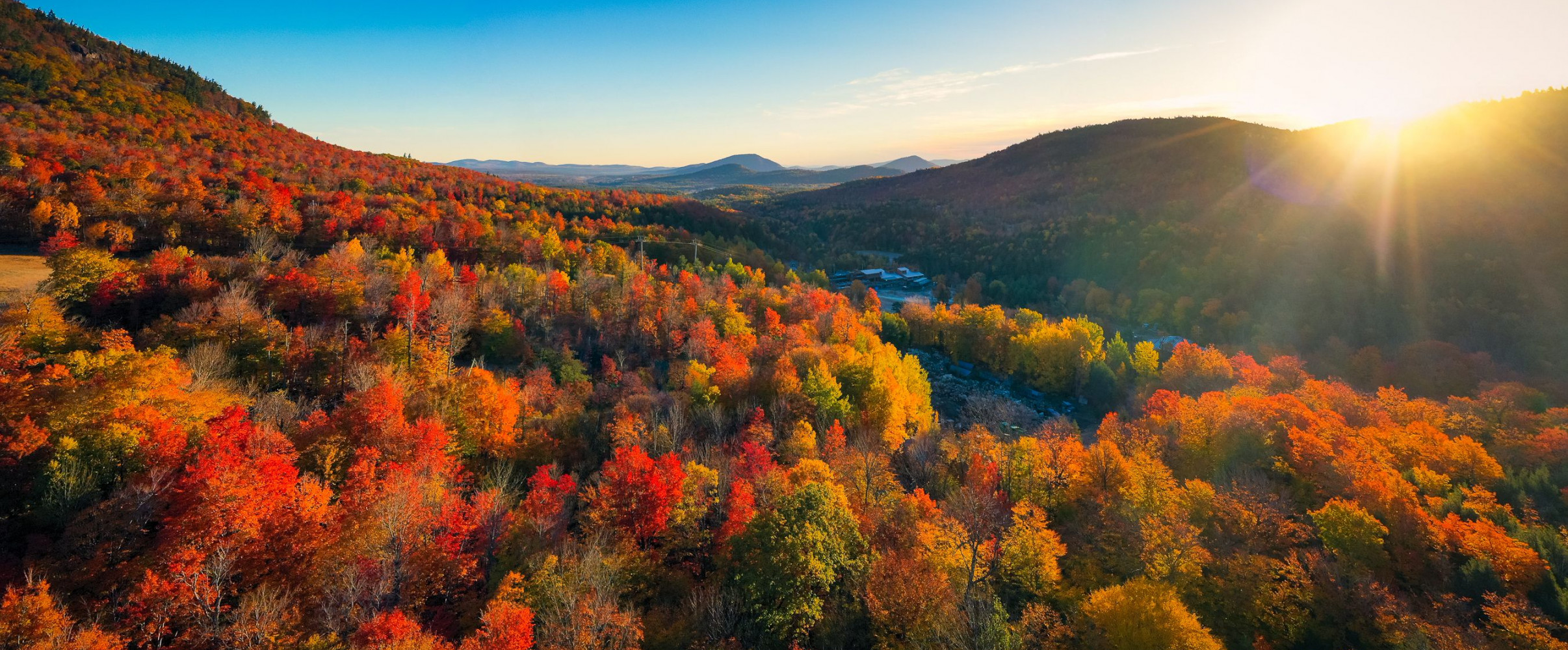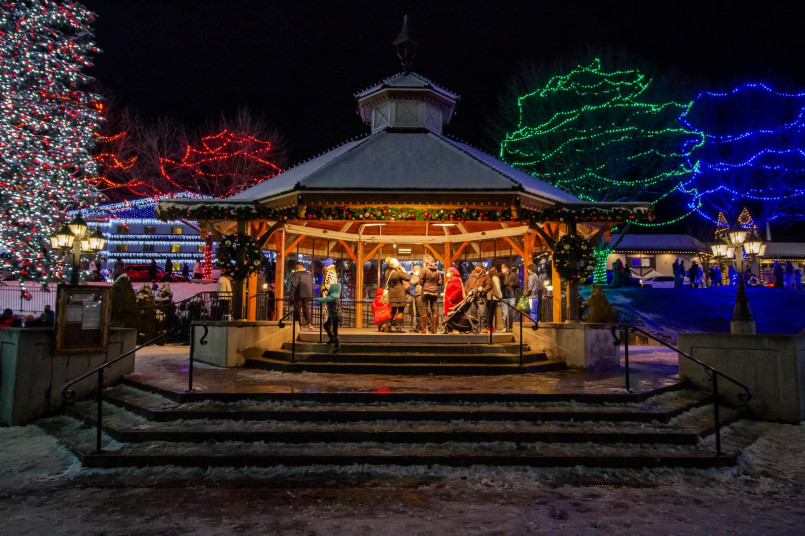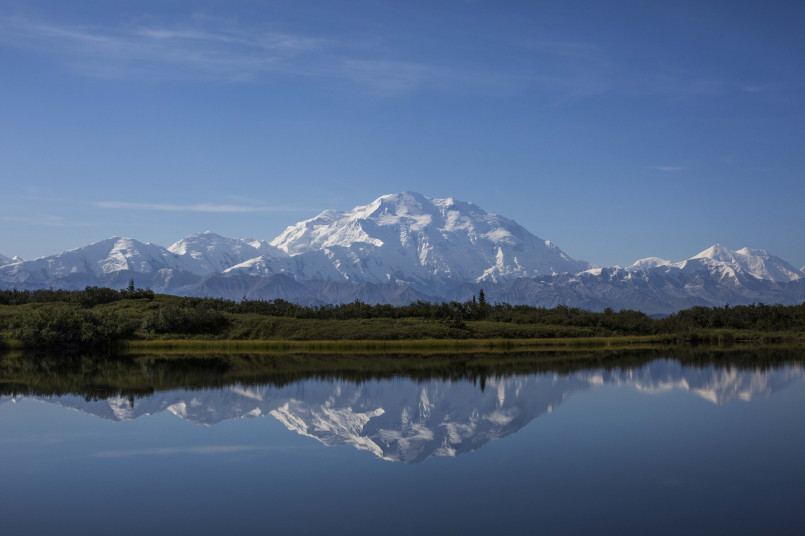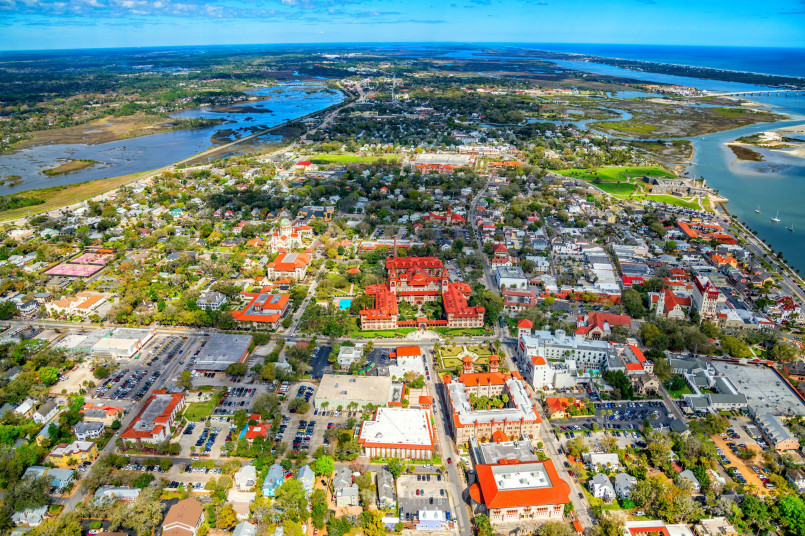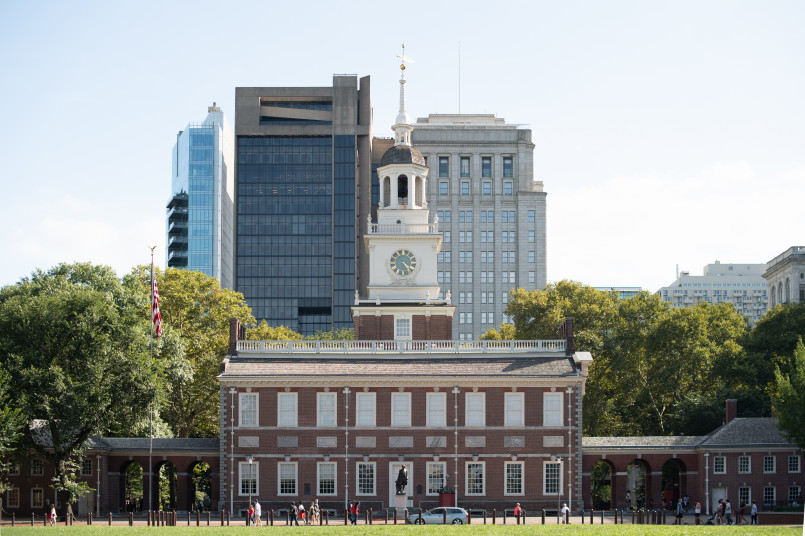When autumn arrives, nature transforms the American landscape into a spectacular canvas of reds, oranges, and golds. From New England's famous sugar maples to the Smoky Mountains' diverse forests, these destinations offer the most breathtaking fall foliage views in the country.
As summer's heat gives way to autumn's chill, a magnificent transformation sweeps across America. Landscapes burst into a kaleidoscope of crimson, amber, and gold as deciduous trees prepare for winter. Each year, millions of "leaf peepers" embark on journeys to witness this breathtaking seasonal spectacle.
From the iconic sugar maples of Vermont to the golden aspen groves of Colorado, America offers some of the world's most spectacular fall foliage displays. This guide explores the country's premier destinations for experiencing autumn's vibrant palette, along with tips on when to visit for peak colors.
New England Autumn Splendor
New England stands as the undisputed champion of fall foliage in America. The region's sugar maples produce the most vivid reds and oranges found anywhere in the world. Vermont's Green Mountains, particularly along Route 100, offer stunning panoramic views of valleys ablaze with color.
In New Hampshire, the Kancamagus Highway cuts through the White Mountains, providing 34 miles of uninterrupted scenic beauty. Maine's Acadia National Park combines colorful forests with dramatic coastline for a uniquely New England autumn experience.
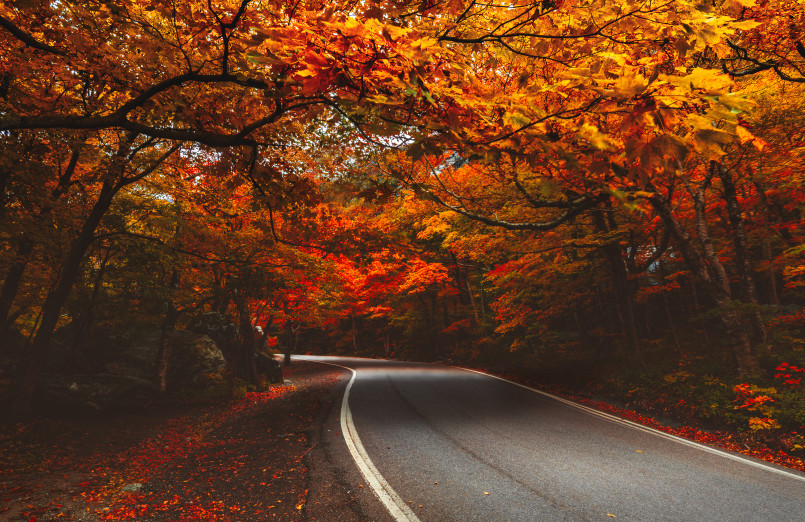
Peak foliage in New England typically occurs from late September through mid-October, moving from north to south. Many small towns host harvest festivals during this period, adding to the seasonal charm.
Great Smoky Mountains
Straddling Tennessee and North Carolina, Great Smoky Mountains National Park boasts one of the most diverse tree populations in North America. This variety creates an exceptional autumn display with more than 100 species of native trees-including sugar maples, hickories, scarlet oaks, and sweetgums-each contributing different hues to the mountainsides.
The park's elevation gradient extends the fall color season from late September through early November. Colors begin changing at higher elevations and gradually work down to the valleys. Newfound Gap Road and Clingmans Dome Road offer spectacular driving routes, while hiking trails like Alum Cave and Chimney Tops provide immersive forest experiences.
Colorado Aspen Groves
Colorado's Rocky Mountains offer a distinctly western fall experience dominated by quaking aspens that transform mountainsides into sheets of shimmering gold. The contrast between golden aspens, evergreen conifers, and often snow-dusted peaks creates a dramatic alpine panorama.

Kebler Pass near Crested Butte contains one of the largest aspen groves in North America. Other prime viewing areas include Maroon Bells near Aspen, the San Juan Skyway in southwest Colorado, and Rocky Mountain National Park. Colorado's peak foliage season typically runs from mid-September to early October, with higher elevations changing first.
Upper Peninsula, Michigan
Michigan's Upper Peninsula is a hidden gem for fall foliage enthusiasts. Surrounded by three Great Lakes, the peninsula's forests of maple, aspen, birch, beech, and oak create a spectacular autumn palette. The region's abundant waterways-including Lake Superior's shoreline-provide reflective surfaces that double the visual impact.
Porcupine Mountains Wilderness State Park offers sweeping vistas of colorful forests stretching to Lake Superior. Pictured Rocks National Lakeshore combines autumn colors with dramatic sandstone cliffs. The best viewing typically occurs from late September to mid-October.
Shenandoah National Park
Virginia's Shenandoah National Park showcases the Blue Ridge Mountains' autumn transformation. The 105-mile Skyline Drive follows the mountain crest, offering over 75 scenic overlooks with spectacular valley views.
The park's diverse forest includes oak, hickory, maple, and dogwood trees, creating a rich tapestry of color. Unlike northern regions, Shenandoah's fall colors peak relatively late-mid-October through early November-making it perfect for extending your leaf-peeping season.
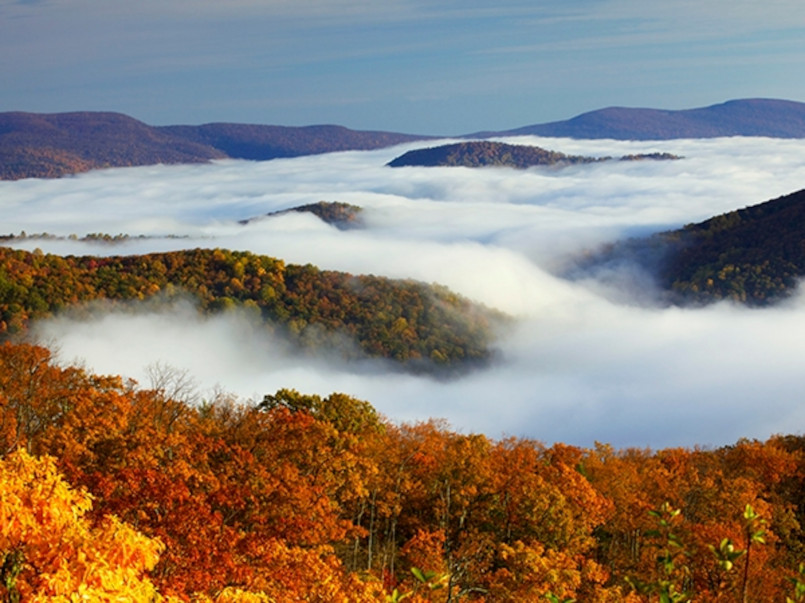
Columbia River Gorge
The Pacific Northwest offers its own unique fall color experience in the Columbia River Gorge between Oregon and Washington. Unlike the maple-dominated East, the Gorge features vibrant yellows from cottonwoods and ash trees, complemented by the reds of vine maples and dogwoods.
What makes this region special is the combination of autumn colors with dramatic landscapes-towering waterfalls, basalt cliffs, and the mighty Columbia River. The Historic Columbia River Highway provides easy access to scenic viewpoints, while hiking trails lead to waterfalls framed by fall colors. Peak foliage typically occurs from mid-October through early November.
Adirondack Mountains
New York's Adirondack Mountains contain the largest protected natural area in the lower 48 states, with six million acres of forests, lakes, and mountains. The region's sugar maples, birches, and beeches create a brilliant autumn display across this vast wilderness.
The Adirondack Scenic Railroad offers a unique way to experience the foliage without driving. Whiteface Mountain's gondola lift provides aerial views of the colorful landscape. Lake Placid and the surrounding High Peaks region offer some of the most dramatic scenery, with mountains reflected in crystal-clear lakes.
Colors typically peak from late September to mid-October, with higher elevations turning first.
Catskill Mountains
Just a few hours from New York City, the Catskill Mountains have inspired artists and nature lovers for generations. The region's rich artistic history-from the Hudson River School painters to Woodstock-adds cultural depth to the leaf-peeping experience.
The Catskill Forest Preserve protects much of the region's wilderness, ensuring spectacular autumn displays year after year. Kaaterskill Falls, the state's highest cascading waterfall, becomes even more dramatic when framed by fall colors. Peak foliage typically occurs from early to mid-October.
Lake Tahoe
While not as famous for fall foliage as eastern destinations, Lake Tahoe offers a unique autumn experience where golden aspens contrast with deep blue waters and evergreen forests. The lake's high elevation (6,225 feet) means colors change earlier than in lower-lying areas of California and Nevada.
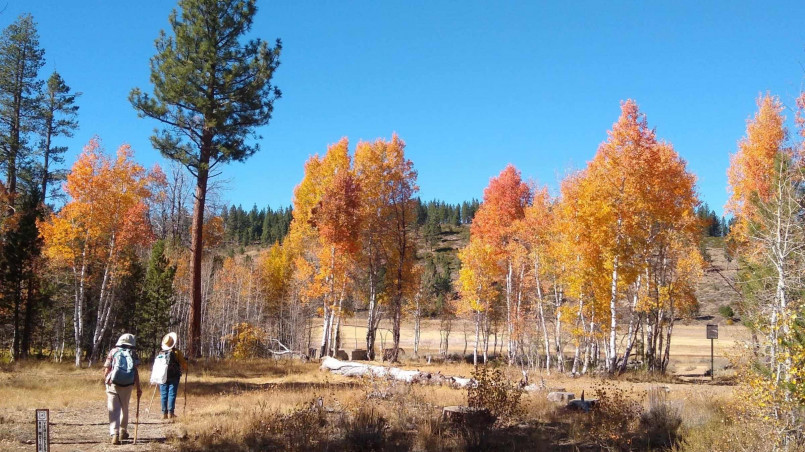
Hope Valley, just south of Lake Tahoe, contains extensive aspen groves that turn brilliant yellow and orange. Mt. Rose Highway northeast of the lake climbs to over 8,900 feet, providing panoramic views of the colorful basin. Peak colors typically appear from late September through mid-October.
Ozark Mountains
Spanning parts of Arkansas, Missouri, Oklahoma, and Kansas, the Ozarks offer a southern perspective on fall foliage. The region's diverse hardwood forests-including oak, hickory, and maple-create a rich mosaic of autumn colors across rolling hills and plateaus.
The Buffalo National River in Arkansas winds through colorful limestone bluffs, while Missouri's Mark Twain National Forest offers extensive woodland experiences. The Ozark Highlands Trail provides long-distance hiking opportunities through the changing forest.
Due to the southern location, colors peak relatively late-mid-October through early November-extending the fall foliage season for travelers.
Finger Lakes Region
Central New York's Finger Lakes combine vibrant fall foliage with vineyard landscapes and pristine glacial lakes. The region's rolling hills and deep lake valleys create dramatic settings for autumn colors.
Wine enthusiasts can enjoy harvest season at the region's numerous vineyards while taking in the colorful surroundings. Watkins Glen State Park features a dramatic gorge with 19 waterfalls, made even more spectacular when framed by autumn foliage. Taughannock Falls, at 215 feet, is the highest single-drop waterfall east of the Rocky Mountains.
Peak colors typically appear from early to mid-October.
Pocono Mountains
Eastern Pennsylvania's Pocono Mountains offer accessible fall beauty within easy reach of major East Coast cities. The region's mixed hardwood forests-including maple, oak, and birch-create a diverse color palette across rolling mountains.
Delaware Water Gap National Recreation Area combines colorful forests with the scenic Delaware River. Big Pocono State Park at Camelback Mountain offers panoramic views extending into New Jersey and New York. The region's many lakes reflect the surrounding colors, doubling the visual impact.
Peak foliage typically occurs from early to mid-October, slightly later than New England but earlier than more southern destinations.
Frequently Asked Questions About 12 Spectacular Places to See Fall Foliage in the USA
When is the best time to see fall foliage in the USA?
Fall foliage timing varies by region and elevation. Generally, colors peak in northern states and higher elevations from mid-September to early October, while mid-Atlantic and southern regions see peak colors from mid-October to early November. For specific destinations, check state tourism websites that often provide weekly foliage reports during autumn.
Why do leaves change color in the fall?
Leaves change color when trees prepare for winter dormancy. As daylight hours decrease and temperatures drop, trees stop producing chlorophyll (the green pigment). This allows other pigments that were always present but masked by chlorophyll to become visible-carotenoids (yellow and orange) and anthocyanins (red and purple).
Which trees produce the most vibrant fall colors?
Sugar maples are famous for their brilliant orange-red foliage. Red maples, as their name suggests, turn bright red. Aspens and birches display golden yellows. Oaks offer russet and brown hues. Hickories turn golden bronze, while dogwoods develop deep purple-red leaves. The greatest color diversity comes in regions with the highest tree species diversity.
How does weather affect fall foliage?
The most vibrant fall colors typically develop when a region experiences warm, sunny days and cool (but not freezing) nights. Drought can cause leaves to turn brown and drop early. Early frost can kill leaves before they change color. Rainy, overcast weather tends to mute colors, while sunny days intensify them.
Are weekdays or weekends better for fall foliage trips?
Weekdays are significantly better for fall foliage trips, especially during peak season. Popular destinations like New England scenic byways, Great Smoky Mountains, and Shenandoah can experience major traffic congestion on October weekends. Accommodations are also more available and often less expensive midweek.
What's the best way to photograph fall foliage?
For the best fall foliage photographs, shoot during the golden hours of early morning or late afternoon when light is warm and angled. Use a polarizing filter to reduce glare and make colors pop. Include water features for reflections. Consider both sweeping landscapes and intimate details of individual leaves. Overcast days can actually be good for close-up photography as they reduce harsh shadows.
